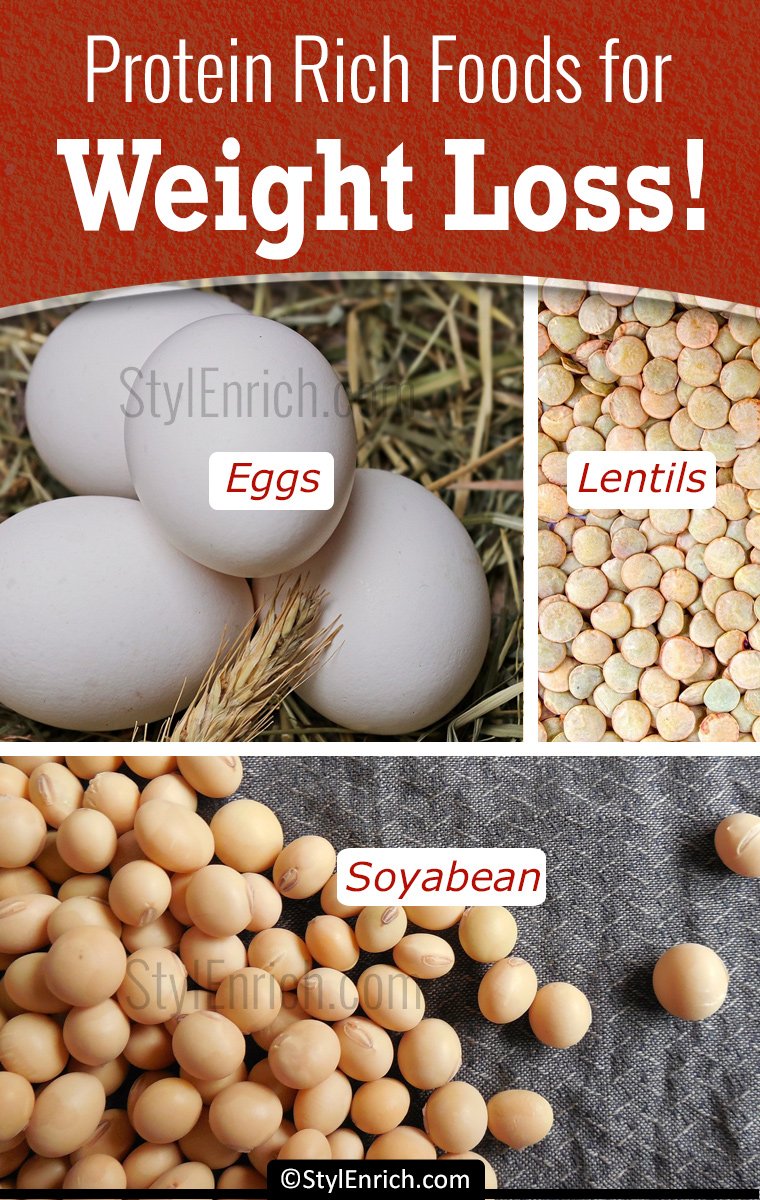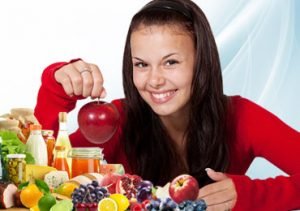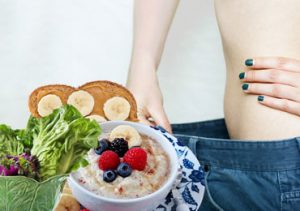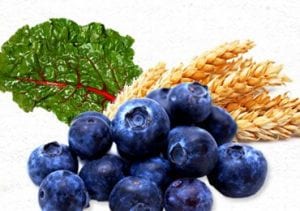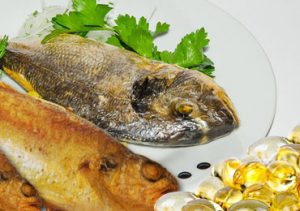- Protein is a macronutrient that has been functioning in the building of muscles, improving the lean body mass and boosting the metabolism.
- Foods like eggs, meat, quinoa, Soybean and cereal pulse combination are protein sources that not only have good protein content but also the optimum quality of protein.
- However, a balance in nutrients is equally essential and should be the key to health.
We all have been told that getting a balance in the nutrients every day has been the key towards effective weight loss and then managing the ideal weight. All nutrients like carbohydrates, fats, protein, vitamins and minerals and fibre along with water should be in a correct balance in order to bring a persistent modification in life. No skipping of meals or totally removing any nutrient from the meal.
When it comes to boosting the metabolism, improving the lean body mass and improving the appetite, protein has been the sure shot nutrient that will help not only in weight loss but also reducing the belly fat.
Importance Of Protein For Weight Loss
1. Protein Boosts Up The Weight Regulating Hormone
A high protein intake reduces the hunger hormone ghrelin and increases the appetite-reducing hormone cholecystokinin and peptide YY. This leads to a major reduction in hunger and has been a major reason in reducing weight.
2. Protein Helps To Boost Metabolism
Protein has a high thermic effect that tends to boost metabolism. Protein helps you to burn more calories around the day, including during sleep. Protein intake increases the number of calories burned by about 80 to 100 per day.
3. Protein Reduces Cravings And Cut Down Late Night Snacking
Protein tends to reduce the cravings which are the dieter’s worst enemy. Many people tend to have cravings at night that add the calories to the total calories taken for the day. These changes help to stick to the healthy diet as much as possible.
4. Protein Prevents The Muscle Loss And Lowering The Metabolism
When we lose weight, it’s not the main culprit, fat is getting lost. When we lose weight, the muscle mass is also getting reduced and that we don’t want to happen. Losing weight also decreases the metabolic rate and we end up burning fewer calories less than we did before. A good protein diet and strength training exercise are the two factors for an effective fat loss.
5. Protein Burns More Calories When We Digest Or Metabolize Protein Containing Foods
When we eat foods, some calories are burned to metabolize and digest foods. This is known as the thermic effect of food. Protein has the much higher thermic effect(20 – 30%) than carbohydrates (5-10%) and fats (0-3%). Hence if we metabolize 100 calories of protein then only 70 per cent is usable calories.
Protein Rich Foods
When we consider Protein-rich foods, there is a term related to the protein called as complete protein and incomplete protein. A complete protein is those proteins that contain amino acids, the building blocks of proteins. There are about 20 amino acids of which 9 are essential amino acids because the body cannot produce these amino acids on its own. We need to depend on foods so that we cannot make it ourselves. A protein is considered complete if the 9 essential amino acids are present in roughly equal amounts. Meat and egg are considered as complete but beans and nuts are incomplete protein. We just need a sufficient amount of essential amino acids every day. Vegetarians do get their share of complete protein. Here are some of the foods to be incorporated.
1. Quinoa
Quinoa is a whole grain and is most beneficial for those who don’t eat animal foods as quinoa is considered as a complete protein. A cup of cooked quinoa provides about 8 gms of protein or 13.8% protein for a grain. Most of the whole grain does not contain amino acid lysine or contains very little lysine. However, quinoa provides this amino acid along with other 8 essential amino acids in balanced amounts.
Quinoa is low in gluten and also contains copper, magnesium, manganese, fibre, iron and less sodium than corn, wheat or barley. But have quinoa in moderation as one cup of quinoa provides 220 calories along with 3.5 gms fat and rinse quinoa well before cooking in order to remove the bitter coating of saponin on these seeds. Quinoa can be used in place of rice in a number of savoury dishes or can be ground into flour for baking. A cup of dry quinoa provides about 3 cups of cooked grains.
2. Soybean
Soybean has high protein and low in lactose and an excellent protein alternative to meat. One cup of cooked soybeans contains 29 gms protein. Tofu which is made from soybean curd delivers about 20 gms of protein in which the firmer kind contains slightly more protein than softer ones. However, it is not the good source of Vitamin B12 as in animal protein. However, do not overdo it.
Stick to the organic forms of soy like tofu and soy milk as well as a fermented form of soya like tempeh and miso. Combine soya with other foods and avoid junks foods prepared of soya as we may develop an allergy to soya if consumed in greater amounts.
3. Combination Of Food With Lentils
Lentils are considered as an easy to prepare, nutritious and easily adjustable food can be added to curries, soups or salads. Lentils are rich in protein, no doubt, but it is also rich in fibre, folate, iron and calcium. But protein present in lentils is not complete protein as it lacks in certain essential amino acids. Hence combining lentils with certain other foods completes the protein and becomes optimum for health. When we combine lentils with grains like oats, rice or wheat it acts as complementary protein for legumes as it contains amino acids methionine and cysteine that lentils lack whereas the lentils provide lysine which the grains do not contain enough.
The classic combination of cereal pulse combination like daal and rice or khichdi has been optimum in terms of complete protein. However, prefer whole grains rather than refined ones. Another perfect complementary protein is the combination of nuts or seeds with legumes that provides better complete protein than the grain and pulse combination. Adding boiled peanuts into the cooked dal is always preferable. Complementary protein can be taken on the same day even if it is not necessary to have the combination in the same meal.
4. Chia Seeds
Technically chia seeds contain less amount of protein coming up to 2.5 gms per tablespoon but chia seeds contain nine essential amino acids. Apart from this, these seeds have been beneficial for busting hunger as the satiety value for chia seeds is high due to the protein, fat and fibre present. The icing on the cake is these seeds contain Omega 3 which will help in reducing heart disorder. Hence add it into the yoghurt or into the smoothie chia seeds helps to keep up the spirits well and active.
5. Eggs
The sole complete protein which consists of 6 gms of protein which fuels up the metabolism, boosts up the muscles and aids in weight loss. Eggs also contain nutrients like choline that help in improving the brain health. Eggs are the most versatile food that can be mixed well with any food. You boil eggs and slide it into the sandwiches or cut the boiled eggs and incorporate into the salads or have it as a snack by itself, eggs merge well and tastes well.
Apart from the above good source of protein, other protein-containing foods like lean meat, hemp seeds, amaranth, milk etc. always add on to the protein intake for the day. However, this doesn’t mean that we need to rely only on protein-rich foods for weight loss. A balance with all nutrients contained in good amounts is necessary for maintaining good health along with active lifestyle, good sleep and exercise.
If there are queries as to how to incorporate protein-rich foods into the diet, you can always consult a nutritionist.
Frequently Asked Questions
1. How much protein should we have every day to get a good supply of protein?
Ans. The reference intake of protein per day is 0.8 gms or 1 gm per Ideal Body weight. Hence the protein intake of a sedentary man weighing about 60kg is 60 gms and the protein intake of sedentary women weighing about 50kg is 50 gms. In certain condition, the need for protein increases as in Pregnancy or lactation. During pregnancy, the protein needs increases by 15gms than the recommended intake and in lactation, the protein needs go up to 20 gms more than the recommended intake.
2. How good is low carb high protein diet for weight loss?
Ans. When we plan for a low carb high protein diet, we should make a point to fill half the plate with non-starchy veggies, a fourth with lean protein and a fourth with beans or whole grains with healthy nuts or avocados. Adding a few servings of fruits and low-fat dairy products can help in reducing the carbohydrates. While there are potential benefits of high protein diet, there have been risks towards having a high protein diet for the extended period.
Excess protein is also stored as fat which can result in weight gain if you are consuming too many calories while trying to increase the protein in the food. It can also damage the kidneys if protein intake is high for the extended period as the kidney has to work harder to remove the extra nitrogen and waste products of protein metabolism. Hence let there be balance in the nutrients with importance given to each and every nutrient in the correct amounts and prefer more of natural foods rather than the processed ones.
Read Next –Best Homemade Protein Shakes For Muscle Building!
